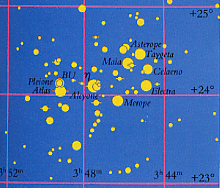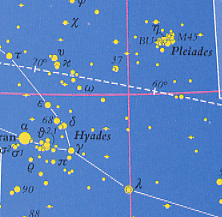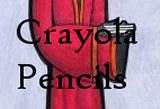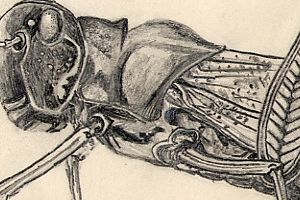fix this page
 |
Many a night I saw the Pleiades, Locksley Hall, Alfred Lord Tennyson |
|
| The Pleiades (close-up)  Part of Taurus showing Pleiades, Hyades and Aldebaran |
What a wonderful misty group of stars is the Pleiades. They are easily seen with the naked eye in the winter sky. They are also known as the Seven Sisters. The Pleiades is the most famous open star cluster in the sky and is part of the Taurus constellation. It is the shoulder of the bull. On a reasonably dark night, you should be able to see six or seven of the stars of the Pleiades; with binoculars you should see nine of the brightest stars. There are around five hundred stars in the Pleiades. Another open star cluster is Hyades (pictured bottom left). It is not as bright as the Pleiades, so you will have to look carefully. Hyades is closer to us, only 150 light years away, so the stars of Hyades appear spread out. Hyades is the head of the bull in the Taurus constellation. On the star-map bottom left is a large star which is left of Hyades. The name of this star is Aldebaran. It is a red giant and the brightest star in Taurus. It's name means "the follower" (of the Pleiades) in Arabic. Only 60 light years away it is the eye of the bull in the Taurus constellation. |
| Sources:
The Nature Company Guides: "Skywatching" by David H. Levy "Handbook of Nature Study" by Anna Comstock January 2, 2000 |
Open clusters lie relatively close to us in the disk of the galaxy. They generally have only tens or hundreds of members, so we can see their individual stars clearly. It is often difficult to separate foreground or background stars from the cluster. With careful study, however, the individual stars can be picked out because they move with a common speed and direction across space. Red giants typically have a mass similar to the Sun's, but if they traded places with the Sun, the atmosphere of the red giant would envelop the solar system's inner planets. Most are, like Aldebaran, orange in color. |




 Make a Sock Bunny
Make a Sock Bunny A new page with several math practice problem sets. Currently addition problems and a few subtraction problems. Each problem set has 10 problems and among the 8 printable files are 56 problems sets.
A new page with several math practice problem sets. Currently addition problems and a few subtraction problems. Each problem set has 10 problems and among the 8 printable files are 56 problems sets.


